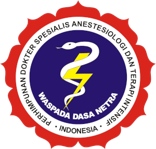Respiratory Failure and Hypercoagulable State in Creutzfeldt-Jakob Disease: A Rare Case Report
Abstract
Background:
Creutzfeldt-Jakob Disease (CJD) is a rare, rapidly progressive neurodegenerative disorder caused by prion proteins. It is characterized by a variety of neurological symptoms that lead to severe cognitive decline and death. The uniqueness of this case lies in the severe complications of respiratory failure and a hypercoagulable state, which are not commonly highlighted in the literature. Reporting this case underscores the critical need for awareness and management strategies for such complications in CJD patients, which can significantly impact their clinical outcomes and quality of life.
Case Illustration:
A 69-year-old female presented with progressively worsening neurological symptoms over a short period. Initially, she experienced visual disturbances and hallucinations, followed by a rapid decline in consciousness, the onset of seizures, and myoclonus. Diagnostic investigations, including an electroencephalogram (EEG) and Magnetic Resonance Imaging (MRI), confirmed the diagnosis of Creutzfeldt-Jakob Disease (CJD).
As her condition deteriorated, the patient developed pneumonia and septic shock. Excessive salivary secretion, a symptom often overlooked in CJD, led to significant respiratory compromise and failure. She was admitted to the intensive care unit (ICU) and required mechanical ventilation. Due to the prolonged need for ventilation and to manage airway secretions better, a tracheostomy was performed.
Management of her respiratory failure involved meticulous care to reduce hypersalivation and prevent micro-aspiration. Regular suctioning of secretions was crucial. Additionally, given her immobility and increased risk of thromboembolism, she received prophylactic heparin to prevent venous thromboembolism. Physiotherapy was initiated to maintain limb mobility, and elastic stockings were used to reduce the risk of deep vein thrombosis.
Conclusion:
This case report highlights the complex clinical challenges in managing a patient with CJD, particularly the severe respiratory and thromboembolic complications. The comprehensive approach to managing respiratory failure through tracheostomy and proactive measures to prevent thromboembolism was essential in stabilizing the patient. However, the incurable nature of CJD meant that the focus ultimately shifted to palliative care. This case underscores the importance of recognizing and managing secondary complications in CJD to improve patient outcomes and the need for ongoing research into effective treatments for this devastating disease.
Keywords
Full Text:
PDFReferences
1. Uttley L, Carroll C, Wong R, Hilton DA, Stevenson M. Creutzfeldt-Jakob disease: a systematic review of global incidence, prevalence, infectivity, and incubation. Lancet Infect Dis. 2020;20(1):e2-e10. doi:10.1016/S1473-3099(19)30615-2
2. Maddox RA, Person MK, Blevins JE, Abrams JY, Appleby BS, Schonberger LB, et al. Prion disease incidence in the United States: 2003-2015. Neurology. 2020 Jan 14;94(2):E153–7.
3. Rasheed U, Khan S, Khalid M, Noor A, Zafar S. A systemic analysis of Creutzfeldt Jakob disease cases in Asia. Prion. 2024 Dec 31;18(1):11–27.
4. Iwasaki Y. Creutzfeldt-Jakob disease. In: Neuropathology. Blackwell Publishing; 2017. p. 174–88.
5. Prodi E, Rossi S, Bertaina I, Pravatà E, Sacco L. Report of a Case of Creutzfeldt-Jakob Disease With an Unusual Clinical Presentation. Front Behav Neurosci. 2020 Apr 9;14.
6. Manara R, Fragiacomo F, Ladogana A, Vaianella L, Camporese G, Zorzi G, et al. MRI abnormalities in Creutzfeldt–Jakob disease and other rapidly progressive dementia. J Neurol. 2024 Jan 1;271(1):300–9.
7. Rhodes A, Evans LE, Alhazzani W, Levy MM, Antonelli M, Ferrer R, et al. Surviving Sepsis Campaign: International Guidelines for Management of Sepsis and Septic Shock: 2016. Intensive Care Med. 2017 Mar 18;43(3):304–77.
8. Malbrain, Manu & Wong, Adrian & Ghosh, Supradip & Nasa, Prashant. (2023). Rational Use of Intravenous Fluids in Critically Ill Patients. 10.1007/978-3-031-42205-8.
9. De Backer D, Biston P, Devriendt J, et al. Comparison of dopamine and norepinephrine in the treatment of shock. N Engl J Med. 2010;362(9):779-789. doi:10.1056/NEJMoa0907118.
10. Permpikul C, Tongyoo S, Viarasilpa T, Trainarongsakul T, Chakorn T, Udompanturak S. Early Use of Norepinephrine in Septic Shock Resuscitation (CENSER). A Randomized Trial. Am J Respir Crit Care Med. 2019;199(9):1097-1105. doi:10.1164/rccm.201806-1034OC.
11. Shekhar S, Singh RB, De RR, Singh R, Akhileshwar, Kumar N. Early versus Late Tracheostomy in Patients with Acute Brain Injury: Importance of SET Score. Anesth Essays Res. 2022;16(1):7-11. doi:10.4103/aer.aer_22_22.
12. Chorath K, Hoang A, Rajasekaran K, Moreira A. Association of Early vs Late Tracheostomy Placement With Pneumonia and Ventilator Days in Critically Ill Patients: A Meta-analysis. JAMA Otolaryngol Head Neck Surg. 2021;147(5):450–459. doi:10.1001/jamaoto.2021.0025.
13. Kahn SR, Lim W, Dunn AS, et al. Prevention of VTE in nonsurgical patients: Antithrombotic Therapy and Prevention of Thrombosis, 9th ed: American College of Chest Physicians Evidence-Based Clinical Practice Guidelines. Chest. 2012;141(2 Suppl):e195S-e226S. doi:10.1378/chest.11-2296.
14. Engbers MJ, Blom JW, Cushman M, Rosendaal FR, Van Hylckama Vlieg A. The contribution of immobility risk factors to the incidence of venous thrombosis in an older population. Journal of Thrombosis and Haemostasis. 2014 Mar;12(3):290–6.
Refbacks
- There are currently no refbacks.








